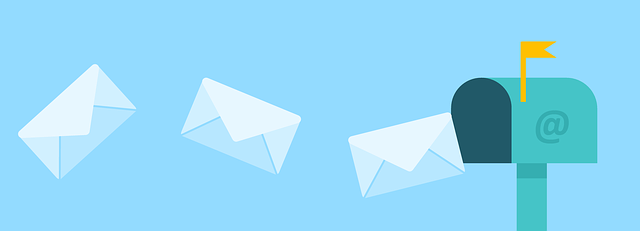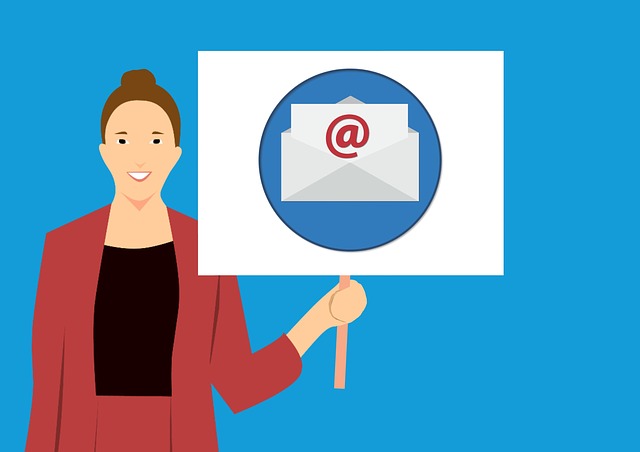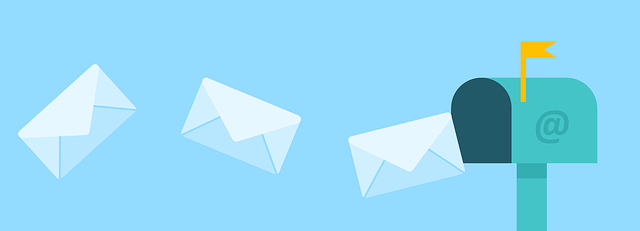In the vast ocean of nonprofit marketing, your email campaigns serve as the lighthouse guiding your organization towards success. But how do you know if your emails are truly making waves? By harnessing the power of email marketing metrics, you can navigate through the tides of data and steer your nonprofit towards greater engagement and impact.
Just like a compass, these metrics provide you with valuable insights into the effectiveness of your email campaigns. They reveal the true reach of your messages, the resonance of your content, and the actions taken by your recipients. By tracking these metrics, you can refine your strategies, optimize your communications, and achieve your fundraising goals.
In this article, we will delve into the key email marketing metrics every nonprofit should track. From the open rate that measures the initial impact of your emails, to the engagement rate that gauges the level of interaction with your content, we will explore how each metric holds the potential to propel your nonprofit towards greater success.
So grab your data goggles and get ready to dive into the world of email marketing metrics.
Key Takeaways
- Open rate is an important metric that indicates the effectiveness of subject lines and content, as well as the ability to reach the right audience.
- Click-through rate measures recipient engagement and can be improved through email segmentation and personalization techniques.
- Conversion rate reflects the success of persuading recipients to take desired actions, such as making donations or signing up for newsletters.
- Unsubscribe rate and bounce rate are important metrics to monitor and can be addressed through list hygiene, simple opt-out processes, and improving email deliverability.
Open Rate
Want to know how many people are actually opening your nonprofit’s emails? Track your open rate to see how successful your email marketing campaigns are!
By analyzing your engagement rate, you can gain valuable insights into the effectiveness of your email subject lines and content. A high open rate indicates that your emails are grabbing the attention of your audience and enticing them to click and open. On the other hand, a low open rate may suggest that your subject lines are not compelling enough or that your emails are not reaching the right audience.
To improve your open rate, consider A/B testing different subject lines and personalizing your emails to resonate with your recipients.
Now, let’s explore the next important metric: click-through rate.
Click-Through Rate
Craving higher engagement? Keep an eye on your click-through rate—it’s the key that unlocks the door to success in email campaigns.
This metric measures the percentage of recipients who clicked on a link within your email, indicating that they found your content compelling enough to take action.
To optimize your click-through rate, consider implementing email segmentation and personalization techniques. By segmenting your email list based on factors like demographics, interests, and past interactions, you can deliver more targeted and relevant content to each recipient.
Additionally, personalization techniques such as using the recipient’s name and tailoring the message to their preferences can significantly boost click-through rates.
By focusing on these strategies, you can drive higher engagement and ultimately increase your conversion rate.
Transitioning into the subsequent section about ‘conversion rate,’ understanding the relationship between these metrics is crucial for maximizing the effectiveness of your email marketing efforts.
Conversion Rate
To achieve optimal results, you need to focus on improving your conversion rate, as it reflects the effectiveness of your efforts in persuading recipients to take the desired action.
Conversion rate is a crucial email marketing metric that measures the percentage of recipients who complete the desired action, such as making a donation or signing up for a newsletter. By tracking this metric, you can gauge the success of your email campaigns in terms of customer acquisition and lead generation.
A high conversion rate indicates that your emails are resonating with your audience and compelling them to take the next step. To improve your conversion rate, consider optimizing your email content, call-to-action buttons, and landing pages.
By continuously monitoring and analyzing your conversion rate, you can make data-driven decisions to enhance your email marketing strategy and drive more meaningful engagement.
Now, let’s move on to discuss the unsubscribe rate.
Unsubscribe Rate
Feeling overwhelmed by the number of emails flooding your inbox? Well, brace yourself for the dreaded unsubscribe rate, which measures the percentage of recipients who have had enough of your content and are bidding farewell to your mailing list.
As a nonprofit, it’s crucial to pay attention to this metric as it directly impacts the effectiveness of your email marketing efforts. A high unsubscribe rate indicates that your audience is not finding value in your emails or may be experiencing email fatigue.
To combat this, focus on list hygiene by regularly cleaning your list and removing inactive or unengaged subscribers. Additionally, make sure your opt-out process is simple and hassle-free, allowing recipients to easily unsubscribe if they choose to do so.
By monitoring and optimizing your unsubscribe rate, you can improve the overall success of your email campaigns. With this in mind, let’s move on to the next topic: bounce rate.
Bounce Rate
Get ready to tackle the bounce rate, a metric that measures the percentage of emails that fail to reach their intended recipients, affecting the effectiveness of your campaigns. Improving deliverability and analyzing email content performance are crucial to reducing bounce rates and ensuring that your messages are reaching your target audience. When it comes to analyzing email content performance, pay attention to factors such as subject lines, email design, and the use of personalization. A/B testing different elements can help you identify what resonates best with your audience and optimize your content accordingly. Additionally, regularly cleaning your email list and removing inactive or invalid email addresses can also help improve deliverability. By monitoring and addressing bounce rates, you can enhance the success of your email campaigns and increase engagement with your nonprofit’s message.
Moving on to the next section about the engagement rate…
Engagement Rate
Now that you understand the importance of monitoring your bounce rate, let’s dive into another crucial metric: engagement rate. This metric measures the effectiveness of your email campaigns in capturing and retaining your audience’s attention. By tracking the engagement rate, you can gain insights into how well your content resonates with your subscribers and identify areas for improvement.
To boost your engagement rate, consider implementing personalization effectiveness techniques. Tailoring your emails to individual recipients can significantly increase their interest and engagement. Additionally, a segmentation strategy can help you target specific groups within your audience, ensuring that your content is relevant and valuable to each recipient.
By optimizing your personalization and segmentation efforts, you can enhance your engagement rate, leading to increased conversions and overall campaign success.
Here are three tips to improve engagement rate:
- Customize subject lines to grab attention
- Use dynamic content to deliver personalized experiences
- Implement A/B testing to optimize email performance.
Frequently Asked Questions
How can nonprofits improve their email subject lines to increase open rates?
To improve open rates, nonprofits need to craft subject lines that grab attention like a magnet. Engage your readers by drawing them in with compelling content.
Use data-driven insights to understand what resonates with your audience and tailor your subject lines accordingly. Experiment with personalization, urgency, and curiosity to pique their interest.
Keep it concise, clear, and relevant to their needs. By strategically optimizing your subject lines, you can increase engagement and maximize the impact of your email campaigns.
What are some effective strategies for increasing click-through rates in nonprofit email campaigns?
To increase click-through rates in nonprofit email campaigns, focus on increasing engagement and targeting segmentation.
Start by crafting compelling and personalized content that resonates with your audience’s interests and needs. Use data-driven insights to analyze past campaign performance and identify patterns that can inform future strategies.
Segment your email list based on demographics, interests, and past behavior to deliver more relevant and targeted messages.
Continuously test and optimize your campaigns to enhance engagement and drive higher click-through rates.
How can nonprofits track and measure the success of their email conversions?
To measure the success of your email conversions, you need to leverage email marketing tracking tools and focus on key performance indicators (KPIs) for email marketing success.
These tools, such as Google Analytics or Mailchimp’s built-in analytics, provide valuable insights into your email campaigns.
Track metrics like open rates, click-through rates, conversion rates, and unsubscribe rates.
Analyze the data to identify trends, optimize your campaigns, and make data-driven decisions that will drive better results for your nonprofit organization.
Are there any best practices for handling unsubscribe requests in nonprofit email marketing?
When it comes to handling unsubscribe requests in nonprofit email marketing, it’s crucial to prioritize compliance with email marketing regulations. By promptly and efficiently managing unsubscribe requests, you can demonstrate respect for your recipients’ preferences and maintain a positive email reputation.
Implement a streamlined process that allows recipients to easily unsubscribe and ensure their requests are promptly honored. This approach will not only help you maintain compliance with email marketing regulations but also foster trust and goodwill with your audience.
What factors contribute to a high bounce rate in nonprofit email campaigns, and how can it be reduced?
To reduce the bounce rate in your nonprofit email campaigns and optimize performance, analyzing email engagement metrics is crucial.
One interesting statistic is that emails with personalized subject lines have a 26% higher open rate. To achieve this, segment your email list based on recipient interests and preferences.
Additionally, regularly clean your email list to remove inactive or incorrect email addresses.
By focusing on engagement and personalization, you can improve email deliverability and reduce bounce rates, leading to more effective nonprofit email campaigns.
Conclusion
In conclusion, tracking email marketing metrics is crucial for nonprofits to optimize their campaigns and drive meaningful engagement. By monitoring open rates, click-through rates, conversion rates, unsubscribe rates, and bounce rates, organizations can gain valuable insights into their audience’s behaviors and preferences.
Armed with this data-driven knowledge, nonprofits can strategically refine their email marketing strategies to deliver more impactful messages and achieve their goals. So, why wait? Start tracking these metrics today and unlock the power of data to create a compelling email marketing campaign that resonates with your audience and drives results.








